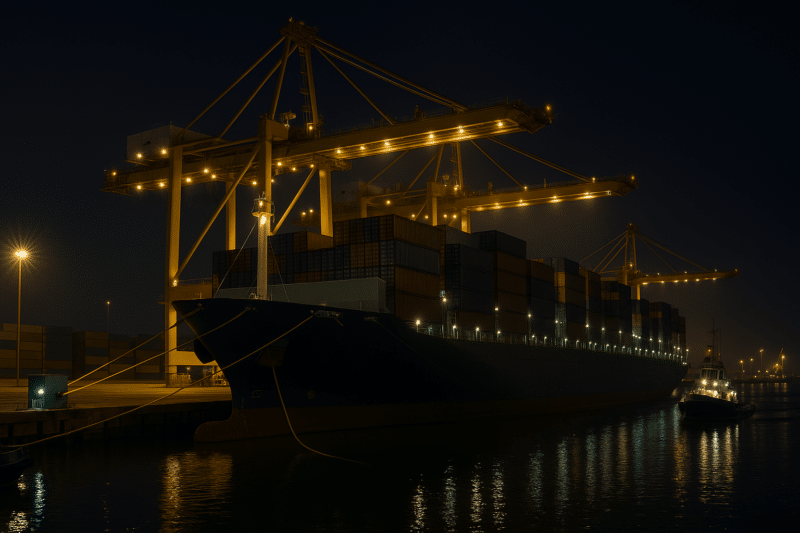Powering the Future: A 30-Year Roadmap to Zero-Emission Port
European Ports Race to Electrify Operations

European ports are under increasing pressure to cut carbon emissions in both landside and waterside operations, spurred by climate policies and local air quality issues. The challenge is significant but manageable with the right strategies and timelines. A comprehensive approach to electrification across all port operations is essential for achieving these ambitious goals.
Decarbonization Strategies for European Ports
To illustrate the potential for decarbonization, consider a mid-sized European port, similar in size and function to Amsterdam or Ghent. Such ports typically handle around 75 million tonnes of cargo annually, including containers, bulk commodities, and roll-on/roll-off (Ro-Ro) cargo. They experience approximately 5,500 seagoing vessel calls each year, along with numerous inland barge movements through interconnected river and canal networks. This diverse traffic makes mid-sized ports ideal candidates for exploring effective decarbonization pathways.
Currently, many port operations rely heavily on diesel-powered equipment and vehicles. For example, a typical port may utilize around 20 diesel-powered straddle carriers or rubber-tire gantry cranes, each consuming about 19 liters of diesel per hour. Additionally, around 50 diesel terminal tractors are used for container movements, contributing significantly to local air pollution and carbon emissions. The emissions from external heavy-duty trucks that deliver and pick up cargo further exacerbate the environmental impact.
The harbor craft fleet, though small, has a disproportionately high emissions footprint. Typically, a port may have three harbor tugs, each burning approximately 150 tonnes of marine diesel oil annually. Smaller vessels, such as pilot boats and maintenance craft, also predominantly rely on diesel. Furthermore, visiting ships often run diesel auxiliary engines while docked, consuming around two to four tonnes of fuel daily. This results in significant auxiliary fuel usage, which could be replaced by shore-side electricity, highlighting the potential for electrification.
Pathway to Electrification and Renewable Energy Integration
The current energy consumption of a mid-sized port ranges from 10 to 20 GWh annually, supporting various operations, including offices and electric cranes. Some progressive ports in Europe have begun to meet 15-20% of their electricity needs through solar installations, indicating a nascent but growing adoption of renewable energy. However, as electrification of port vehicles, harbor vessels, and visiting ships progresses, overall electricity demand will rise, necessitating strategic planning and investment in renewable capacity and grid infrastructure.
Ministry of Steel organizing an event Greening Steel: Pathway to Sustainability
The total annual carbon dioxide emissions for a port of this scale range between 200,000 and 300,000 tonnes, stemming from diesel vehicles, harbor vessels, and auxiliary power generation from docked ships. This substantial baseline presents both a challenge and an opportunity. Achieving complete emissions elimination is ambitious but feasible through a phased strategy that combines electrification, shore-side power, advanced battery storage, and significant integration of renewable energy sources like offshore wind and solar power.
The complexity of port operations, coupled with the high energy demands of heavy equipment and ships, underscores the need for incremental and well-planned steps. Each phase must balance infrastructure investment with proven solutions, ensuring operational continuity while progressing towards full decarbonization over the coming decades. Future articles will outline specific strategies and timelines for achieving these goals, detailing the transformation of port operations over time.
